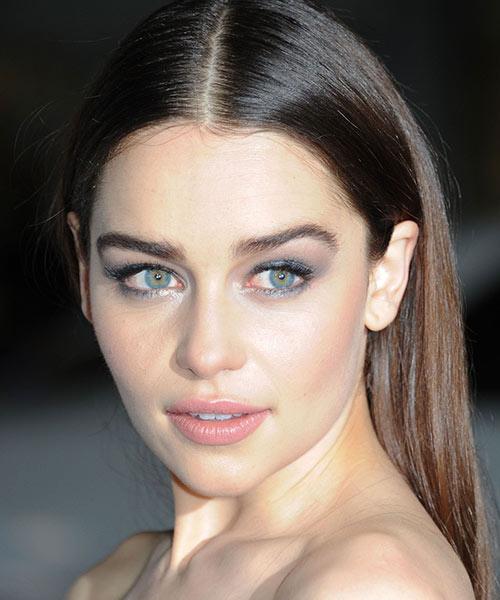Have you ever found yourself captivated by someone’s eyes? The way they sparkle, the depth of their gaze, the color that seems to draw you in. We all have a preference for certain eye colors, but is there truly a “most attractive” one? It’s a question that has intrigued humans for centuries, prompting endless debates and sparking countless myths and legends.
.jpg)
Image: the-top-desktop-hd-wallpapers.blogspot.com
This fascination with eye color stems from its deep connection to our perception of beauty and attraction, and how it unconsciously influences our judgment of others. But the answer to the question of what constitutes the most attractive eye color is surprisingly complex, entwined with cultural biases, individual preferences, and the very nature of human perception itself.
The Science Behind Eye Color
Before diving into the subjective realm of attraction, let’s first understand the scientific basis for eye color. The color of our eyes is determined by the concentration of a pigment called melanin within the iris, the colored part of our eye. The more melanin in the iris, the darker the eye color.
The most common eye colors include:
- Brown: The most prevalent eye color globally, brown eyes are characterized by high amounts of melanin.
- Blue: Resulting from a lower melanin concentration, blue eyes are generally considered less common than brown eyes.
- Green: Often associated with a unique and alluring quality, green eyes are a result of a rare combination of genes that affect melanin levels.
- Hazel: The term “hazel” encompasses a range of colors, from golden browns to greenish shades, often displaying a mixture of pigments.
- Gray: With a muted appearance, gray eyes contain low melanin concentrations and are often associated with a cool and sophisticated look.
Interestingly, eye color is not a static feature; it can change subtly throughout our lives due to factors like age, light exposure, and even our current emotional state. The intricate dance of pigments and light interactions within the iris create the unique and ever-changing nuances we perceive as eye color.
Cultural Perspectives on Eye Color
Beyond the biological factors, cultural perspectives have a significant impact on how we view eye color and its attractiveness. Throughout history, specific eye colors have been associated with various qualities, both positive and negative, shaping our perceptions of those who possess them.
Ancient Civilizations and Eye Color:
In ancient Mesopotamia, blue eyes were often considered a sign of divinity and royalty. Ancient Egyptians, on the other hand, held a more nuanced view, associating different eye colors with specific deities and symbolic meanings.

Image: animalia-life.club
Medieval Europe and the “Blue Eyes Myth”:
During the Middle Ages, blue eyes became strongly associated with purity, innocence, and spirituality in Europe. This association was often linked to religious beliefs and images of angels and saints, solidifying a cultural preference for blue eyes over other shades.
Modern-Day Perceptions:
Nowadays, cultural biases continue to influence how we perceive eye color. In some parts of the world, darker eye colors are often associated with strength, passion, and intensity, while lighter shades are linked to gentility and allure. These perceptions are often reinforced through media, literature, and popular culture.
The Psychology of Attraction: Beyond the Color
While cultural biases play a role, individual preferences for eye color are ultimately subjective and influenced by a complex interplay of psychological factors.
Here’s a glimpse into the psychological underpinnings of attraction:
- Symmetry and Harmony: Research suggests that our brains find symmetry and harmonious features appealing. A perfectly aligned face, including well-proportioned eyes, can trigger a subconscious feeling of attractiveness.
- Subtle Contrast: Differences in eye color compared to skin and hair color can create an appealing contrast, enhancing the overall aesthetic appeal of a person.
- Eye Contact and Gaze: Beyond the physical features, the way someone looks at you can play a significant role in attraction. An intense gaze or a warm, welcoming look can create a powerful connection.
- Emotional Connection: Ultimately, the most powerful aspect of attraction is a shared connection and emotional understanding. Whether someone has blue eyes or brown eyes becomes less important when you share a genuine connection with another person.
Is There a “Most Attractive” Eye Color?
The reality is, the concept of a single “most attractive” eye color is a myth. What truly makes an eye color attractive is its ability to connect with us on an emotional level, sparking a sense of admiration and intrigue.
Just like any other physical feature, the allure of eye color is subjective and influenced by personal preferences, cultural backgrounds, and individual experiences. Focusing solely on the color itself overlooks the myriad of factors that contribute to our perception of beauty and attraction.
What Is The Most Attractive Eye Color
Embrace the Uniqueness of Every Eye
Instead of seeking a definitive answer to the “most attractive” eye color, let’s celebrate the diversity and uniqueness of each individual’s gaze. Each eye color holds its own charm, reflecting the beauty of human diversity and the captivating power of our shared humanity.
Remember, the most attractive eyes are the ones that shine with kindness, warmth, and a genuine connection.





